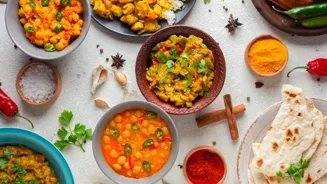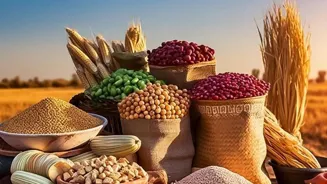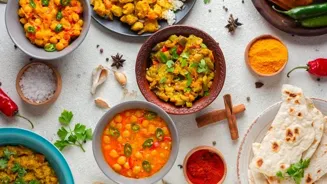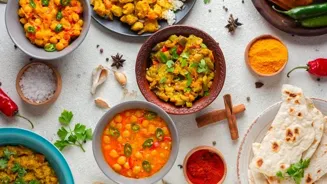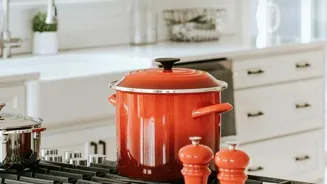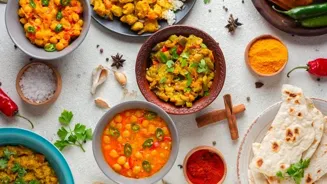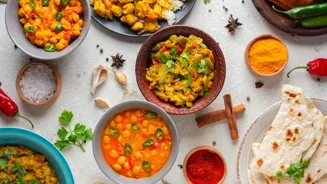Discover the rich tapestry of rice in Indian cuisine - from varieties to recipes. Dive into this fascinating journey!
Rice, or chawal as we lovingly call it, isn't just a staple food in India; it's an integral
part of our culture, traditions, and daily lives.
From the snow-capped Himalayas to the coastal regions of the South, rice cultivation and consumption vary greatly, showcasing the incredible diversity of our nation. It's enjoyed in humble homes and grand feasts alike, proving its versatility and universal appeal.
This humble grain has travelled through centuries, adapting and evolving to become the heart of countless Indian dishes, each region boasting its own unique rice story. Rice is deeply woven into the fabric of Indian life.
India's diverse rice varieties offer unique flavors and textures, from Basmati to Sona Masuri and Ponni
India boasts an astounding array of rice varieties, each with its distinct flavor, aroma, and texture. Basmati, the "king of rice," reigns supreme with its long, slender grains and fragrant aroma. Grown primarily in the Himalayan foothills, it's the star of biryanis and pulaos.
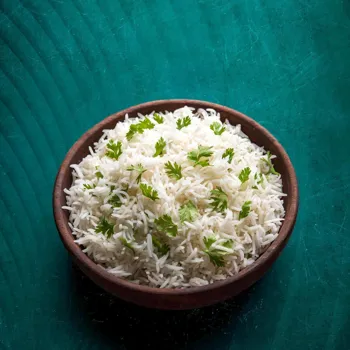
Sona Masuri, a lighter, non-sticky variety, is a popular choice for everyday meals. Similarly, Ponni rice, predominantly consumed in South India, is known for its fluffy texture and subtle sweetness.
Then there's Gobindo Bhog from West Bengal, a short-grained, aromatic rice used in special desserts. Each kind brings its unique flavour.
Diverse rice cooking methods in India, from boiling to pressure cooking and traditional earthen pots
The way we cook rice in India is as diverse as the varieties themselves. The simplest method, boiling, is a staple in many homes. Steaming, often favored for Basmati, preserves the rice's delicate aroma and texture.
The absorption method, where rice is cooked in a measured amount of water until fully absorbed, ensures perfectly cooked grains. Pressure cooking, a quick and efficient method, is preferred in busy households.
And let's not forget the traditional methods like cooking in earthen pots over an open fire, which adds a unique smoky flavor. The cooking method is important.
Indian cuisine's diverse rice-based dishes celebrate flavors and traditions
Beyond the basic steamed rice, Indian cuisine showcases a plethora of rice-based dishes. Pulao, a fragrant rice dish cooked with vegetables and spices, is a common celebratory treat. Vegetable Biryani, a mix of rice and vegetables and spices, is another popular dish that varies from regions.
Curd rice, a soothing and cooling dish made with yogurt and tempered spices, is a South Indian specialty. And Kheer, a creamy rice pudding, served during festivals and celebrations. Each recipe unveils a new way to enjoy this versatile grain. Rice is a treat too.
Explore delicious vegetarian rice recipes: veg pulao, lemon rice
Let's explore some simple yet delightful vegetarian rice recipes that you can try at home. A basic vegetable pulao can be made by sautéing some finely chopped vegetables like carrots, peas, and beans with spices like cumin, coriander, and turmeric.
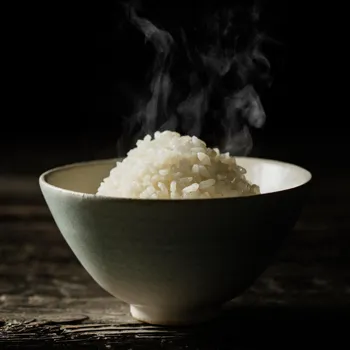
Add pre-soaked basmati rice and cook in water or vegetable stock until the rice is fluffy. For a tangy twist, try lemon rice. Sauté mustard seeds, curry leaves, and turmeric in oil, then add cooked rice and lemon juice. Mix well and garnish with fresh coriander.
These simple dishes are easy to make.
Rice offers health benefits beyond just recipes
Rice isn't just about recipes. This grain holds numerous health benefits. It's a good source of carbohydrates, providing energy for our daily activities. Brown rice, with its higher fiber content, aids digestion and promotes gut health. Rice is also gluten-free.
Rice water, the starchy liquid left after cooking rice, has been used for centuries in traditional medicine as a remedy for digestive issues and skin ailments. From being a energy source to something good for your gut. Rice is more than just a food.
